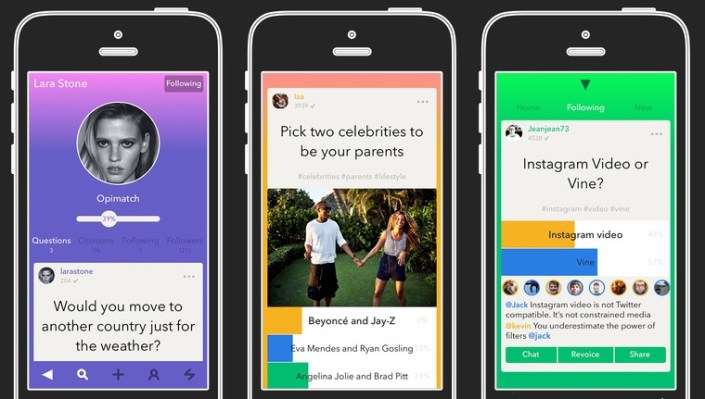Voice Polls has come a long way. Formerly named Poutsch, the startup is moving away from its consumer-only focus to create an interesting market research tool. With the 2.0 release, you can pay to ask a panel of users, and users can now get paid to answer these polls.
First, let’s talk about the product. Voice Polls is now available on iOS, Android and the web. It’s a simple colorful polling app with a community of dedicated users. Questions can be silly, inspiring or informative.
Now that Voice Polls is available on every platform, it is frictionless to share your question on many different platforms, including your own website. But Voice is not just building a simple polling tool.
The true beauty of Voice Polls is that the company is building an opinion graph without any effort. Users usually answer dozens of questions, and the startup can learn a lot about their users just by keeping track of these answers. You can combine answers to tailor a group of users who like very specific things
“With a lot of active users, things get a lot more interesting,” co-founder and COO Felix Winckler told me in a phone interview a few months ago. “Ideally, you should be able to create a poll, target our users and get results in an hour.”
That’s why usage numbers are very important as well. The company provides publishing tools for content websites so that they can embed simple questions. Many publishers used to use Polar embeds, but Polar was recently acqui-hired by Google. It turned Voice Polls into an interesting alternative overnight. You can now find more than 20 million different polls in Voice Polls.
And now, marketers can pay to do market researches on Voice Polls, and users will get a tiny amount of money to answer their questions — the startup probably takes a cut. It remains to be seen whether it is an effective business model, but it is an interesting take.
When I first talked with Voice’s team 18 months ago, the product was nowhere near as polished and focused as it is now. In 2013, the team was vaguely looking to build an opinion graph but didn’t really know what to do with it. I’m very happy to see that things are looking much better now, and I’m confident that this mixture of good-looking usage numbers and paid marketing clients is a good model.
